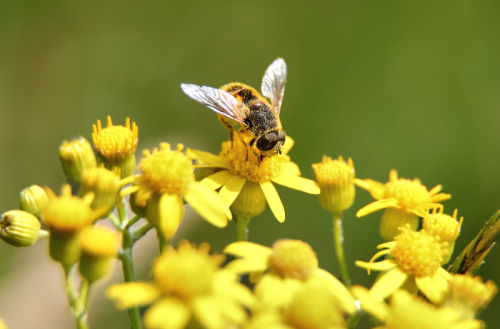10 Warning Signs of Mold Toxicity: Detection, Toxicity Assessment, and Effective Removal Strategies
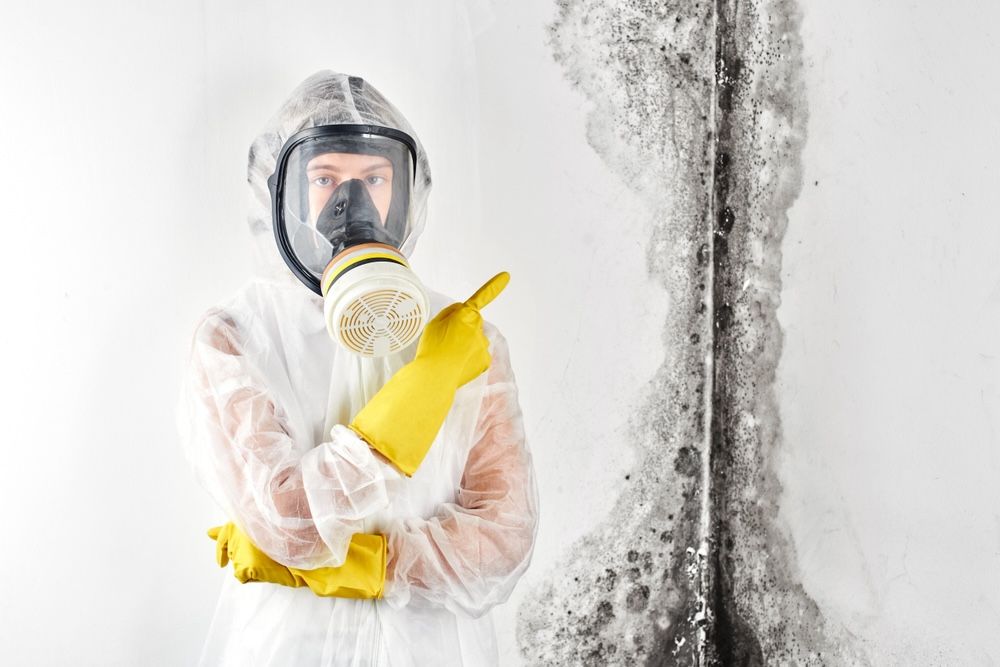
Mold toxicity, widely known as mycotoxin exposure, presents a critical health risk, affecting individuals through various pathways. The inhalation of airborne mold spores is the most common, but ingestion or dermal contact can also lead to serious health problems. Mold thrives in conditions where there is excessive moisture — often in places with insufficient airflow, such as basements, bathrooms, and kitchens, where water vapor and condensation are commonplace. In buildings with poor ventilation, trapped moisture from leaks, condensation, or high humidity contributes to mold growth, especially in porous materials like wood, ceiling tiles, and fabrics.
Recognizing the early signs of mold exposure, such as musty odors, visible mold growth, water damage, or persistent health symptoms, is vital for taking prompt action. Early detection allows for the containment and eradication of mold before it spreads or becomes entrenched, which is critical in preventing acute and potentially chronic health issues. Mold-related health complications can range from mild allergic reactions to severe respiratory conditions, neurological symptoms, and in cases of long-term exposure, may even lead to toxic buildup in the body's systems, presenting as mycotoxicosis.
Educating oneself about the potential sources and habits that promote mold growth is an important step in prevention. Regular maintenance of plumbing and roofing, along with the use of dehumidifiers and proper ventilation, can significantly mitigate mold risks. In work environments, adhering to Occupational Safety and Health Administration (OSHA) guidelines for indoor air quality can help protect employees. For homeowners, simple steps such as ensuring bathrooms are well-ventilated and fixing leaks promptly can make a substantial difference.
Health outcomes can be improved dramatically by addressing mold problems swiftly. Not only does this intervention prevent the worsening of symptoms, but it also maintains the structural integrity of buildings, as mold can degrade building materials over time. A detailed understanding of the warning signs of mold toxicity is indispensable, and awareness is the first step towards maintaining environments that support rather than undermine our health. As we consider the ten warning signs of mold toxicity, it's clear that this environmental hazard requires our attention and action for the sake of public health and well-being. Here’s a detailed look at the ten warning signs of mold toxicity that should not be overlooked.
-on-ceiling.jpg) Photo #1: Infestation of Black Mold (Stachybotrys chartarum) on Ceiling: The photo captures a severe case of black mold growing across a ceiling, typical of long-term moisture problems and a lack of ventilation.
Photo #1: Infestation of Black Mold (Stachybotrys chartarum) on Ceiling: The photo captures a severe case of black mold growing across a ceiling, typical of long-term moisture problems and a lack of ventilation.
Respiratory Issues: Persistent respiratory symptoms such as coughing, sneezing, sinus congestion, and difficulty breathing can be alarming signs of mold exposure. These symptoms can become more pronounced in environments plagued by mold infestation, as mold spores can be inhaled, irritating the airways and lungs. For individuals with pre-existing respiratory conditions like asthma or allergies, exposure to mold can exacerbate their symptoms, leading to further health complications. It's crucial to monitor these symptoms and their correlation with specific environments, as this can be a clear indicator of the presence of mold.
Skin Irritations: Mold exposure can lead to a variety of skin reactions ranging from mild rashes to severe irritation. Symptoms such as itching, hives, and dermatitis are common and can be particularly acute in individuals with sensitive skin or allergies. These skin reactions occur when mold spores come into direct contact with the skin, triggering an immune response. For those with a predisposition to skin conditions, mold exposure can worsen their symptoms, making it important to recognize and mitigate mold in their environments.
Eye Irritations: The eyes are particularly sensitive to mold spores, leading to redness, itchiness, and excessive watering. These symptoms can often mimic those of seasonal allergies, making it challenging to identify mold exposure as the root cause. However, if these symptoms persist beyond typical allergy seasons or worsen in specific indoor environments, it may indicate a mold problem. Prolonged exposure can lead to more severe eye conditions, underscoring the importance of addressing mold issues promptly.
Fatigue and Weakness: Unexplained fatigue and a persistent sense of weakness can be indicative of mold exposure. This is because mold toxins can affect the body's central nervous system and immune response, leading to a general feeling of malaise and lethargy. Individuals may find it difficult to perform daily activities and experience a decrease in their overall quality of life. If rest does not alleviate these symptoms, it’s worth considering mold exposure as a potential cause.
Headaches: Frequent headaches or migraines that are resistant to typical treatments may be a sign of mold toxicity. These headaches can become more severe in environments with mold infestation, suggesting a direct link between mold exposure and neurological symptoms. The presence of mold can lead to an inflammatory response in the body, contributing to the severity and frequency of headaches.
Memory Problems and Difficulty Concentrating: Exposure to mold can have significant effects on cognitive functions, including memory retention, concentration, and the ability to process information. Individuals may experience confusion, disorientation, and difficulty focusing on tasks, which can impact their work and personal life. These symptoms arise from the neurotoxic effects of certain molds, which can interfere with brain function and cognitive health.
Joint Pain and Muscle Aches: Mold toxicity can trigger inflammatory responses in the body, leading to joint pain and muscle aches without any apparent cause. These symptoms can be debilitating, affecting mobility and comfort. The inflammation caused by mold exposure can mimic symptoms of rheumatoid arthritis, making it challenging to diagnose without considering environmental factors.
Numbness and Tingling: Certain types of mold produce mycotoxins that can affect the nervous system, leading to sensations of numbness and tingling in extremities. This can be a disturbing experience, as it suggests neurological impact and can affect daily functioning. Recognizing this symptom as a potential sign of mold exposure is crucial for seeking appropriate medical evaluation and intervention.
Mood Changes: Exposure to mold can result in significant mood changes, including increased irritability, depression, and anxiety. These mood swings can be attributed to the physiological impact of mold toxins on the brain, affecting neurotransmitter levels and brain function. The psychological stress of dealing with persistent health symptoms without a clear cause can also contribute to mood disturbances.
Immune System Suppression: Frequent infections and a general decrease in immune system efficiency can be signs of mold toxicity. Individuals exposed to mold may find themselves more susceptible to colds, flu, and other infections due to the immunosuppressive effects of mycotoxins. This can create a cycle of illness and recovery that impacts overall health and well-being.
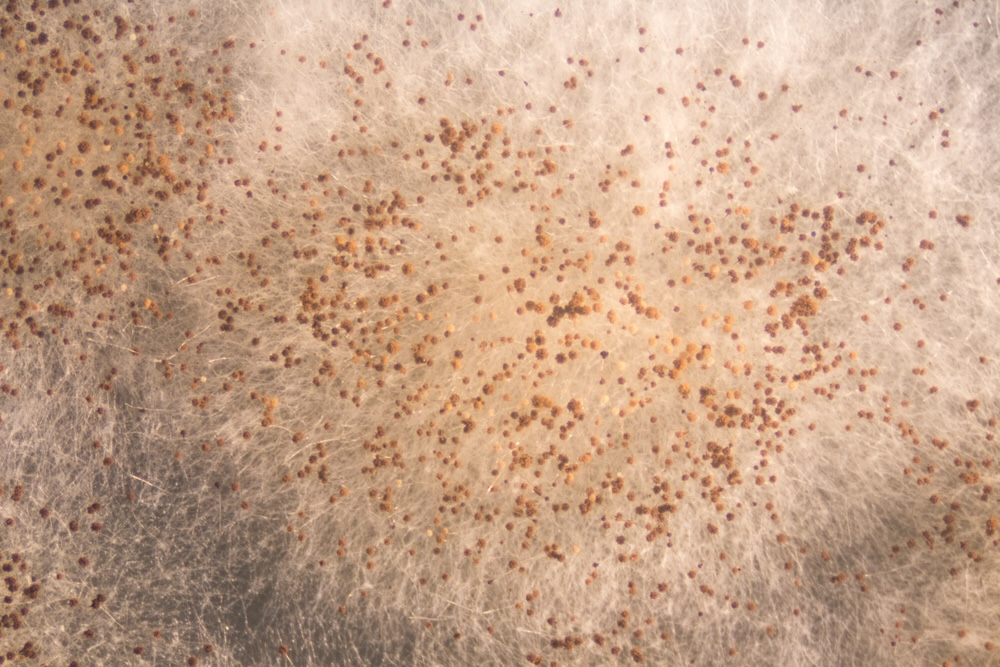 Photo #2: Close-Up of Aspergillus Mold Growth: This image shows a close-up view of Aspergillus mold, characterized by its fuzzy texture and spore-producing structures. The mold's varying brown tones indicate different stages of spore development.
Photo #2: Close-Up of Aspergillus Mold Growth: This image shows a close-up view of Aspergillus mold, characterized by its fuzzy texture and spore-producing structures. The mold's varying brown tones indicate different stages of spore development.
If you suspect that you're experiencing symptoms related to mold exposure, it's crucial to address the issue promptly. This can involve testing your living or working environment for mold, consulting with healthcare professionals for a proper diagnosis, and taking steps to remove the mold and prevent future growth. Early intervention can help mitigate the health risks associated with mold toxicity and improve your overall well-being. Addressing mold exposure is critical for maintaining health and preventing the escalation of symptoms associated with mold toxicity. Understanding the steps for detecting mold, identifying its toxicity, and effectively removing it can significantly contribute to creating a safer and healthier living or working environment.
How to Detect Mold
Detecting mold in your home or workplace requires vigilance and sometimes a bit of detective work, as mold can lurk in less obvious places, including behind wallpaper, in the padding underneath carpets, inside HVAC systems, and even within ceiling tiles. Mold often thrives in areas with excessive moisture, such as around leaks in roofs, windows, or pipes, or where there has been flooding. Beyond the telltale musty, earthy odor, which can lead you to the general vicinity of mold growth, other sensory indicators include persistent physical symptoms among the inhabitants, such as allergies that seem to flare without an apparent trigger. Visually, apart from discoloration and strange spots on surfaces, look out for peeling or bubbling paint and wallpaper, which can suggest the presence of mold beneath. Tactile clues can include dampness on surfaces or a noticeable increase in humidity within certain rooms. If your observations and senses suggest the presence of mold but you cannot find the source, using a moisture meter can help pinpoint areas of concern. For a more thorough investigation, especially in larger buildings or after water damage, engaging a professional mold inspector might be prudent. These experts come equipped with sophisticated tools, including hygrometers to measure humidity, borescopes to see inside walls, and infrared cameras that can detect cool areas where moisture may accumulate unseen. Their expertise can be invaluable, not only in detecting mold but also in identifying the water source causing the growth, which is essential for proper remediation and prevention of future growth.
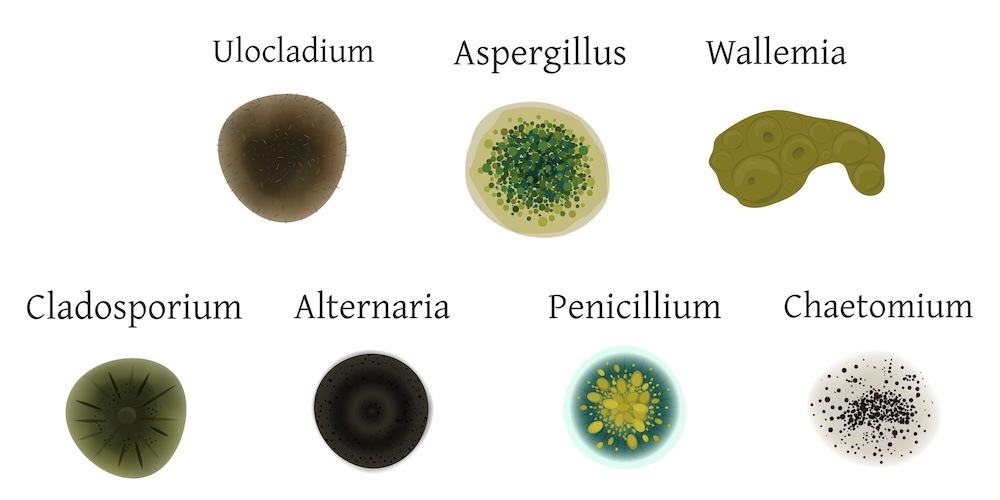 Photo #3: Types of Common Indoor Molds: An informational graphic depicting various types of molds such as Ulocladium, Aspergillus, Wallemia, Cladosporium, Alternaria, Penicillium, and Chaetomium, which are often found indoors.
Photo #3: Types of Common Indoor Molds: An informational graphic depicting various types of molds such as Ulocladium, Aspergillus, Wallemia, Cladosporium, Alternaria, Penicillium, and Chaetomium, which are often found indoors.
How to Know That Mold is Toxic
The toxicity of mold is a significant health concern, as certain species release mycotoxins that can be harmful when inhaled, ingested, or come into contact with the skin. To thoroughly understand if the mold in your environment poses a toxic risk, a multifaceted approach is typically recommended. In addition to professional assessments, which are paramount, homeowners can do preliminary research on the characteristics of various molds. Mold testing, which should be carried out by certified specialists, involves taking samples from the air and affected surfaces to be sent to a laboratory for detailed analysis. This analysis is aimed at identifying not just the genus but also the species and subspecies of the mold, which can determine the precise level of risk it poses.
Informative indicators such as the color, texture, and location of mold can sometimes give clues as to its identity. For instance, Stachybotrys, which is black and slimy to the touch, and certain species of Aspergillus and Penicillium, which may present in varying colors and powdery textures, are known for their mycotoxin production. Nevertheless, visual inspection alone cannot guarantee the accurate identification of toxic mold, as some non-toxic molds mimic the appearance of their dangerous counterparts. This makes laboratory analysis indispensable.
Furthermore, chronic exposure to even non-toxic molds can lead to a heightened sensitivity and an array of health problems, underscoring the need for removal. Healthcare professionals may also perform tests to determine if individuals have developed reactions to specific molds, providing a clearer picture of the health implications in the affected environment. As mold sensitivity varies widely among individuals, with symptoms ranging from mild allergic reactions to severe respiratory issues, it is advisable to err on the side of caution. Even in the absence of visible mold, a musty smell can indicate the presence of mold microflora, warranting further investigation.
Additionally, it's important for individuals to note any correlating health symptoms that align with time spent in mold-infested environments, as this can be a tell-tale sign of toxic exposure. It's also crucial to assess the history of the building for past water damage, which can suggest the likelihood of more aggressive mold types that flourish in chronically damp interiors. Recognizing the signs and understanding the risks associated with mold can lead to more informed decisions about mitigation and health precautions. Regular inspections and prompt action at the first sign of mold can prevent the proliferation of these fungi, thereby reducing the risk of exposure to toxic varieties.
.jpg) Photo #4: Moldy Citrus Fruit (Penicillium Mold): A lemon covered in green and white mold illustrates how quickly and extensively mold can grow on organic materials under the right conditions.
Photo #4: Moldy Citrus Fruit (Penicillium Mold): A lemon covered in green and white mold illustrates how quickly and extensively mold can grow on organic materials under the right conditions.
How to Clean / Remove Mold Properly
Proper mold removal is crucial to ensuring that the mold does not return and that its health risks are minimized. For small areas of mold (less than about 10 square feet), you can attempt to clean it yourself. Use a solution of water and detergent, but avoid using bleach, as it does not prevent the mold from returning and can pose its own health risks. Wear protective gear, including gloves, goggles, and an N95 respirator, to protect yourself during the cleaning process. For larger infestations or if the mold is in the HVAC system, it's best to hire professionals who specialize in mold remediation. These experts have the necessary equipment and techniques to safely and effectively remove mold from your home or workplace. After removal, addressing the underlying cause of the mold, such as leaks or high humidity, is essential to prevent it from coming back.
For cleaning mold, it's advisable to use a mild, non-ammonia detergent or soap. The specific type of detergent isn't as crucial as ensuring it's gentle and doesn't contain ammonia. Mixing ammonia with bleach, for example, can produce dangerous fumes, so it’s important to stick to simple cleaning agents. A simple dish soap or a laundry detergent that doesn't have any added fragrances or complicated chemical components is usually sufficient. The goal is to clean away the mold without leaving behind substances that could harm your health or contribute to further mold growth.
When preparing your cleaning solution, you can mix a small amount of the detergent with water to create a solution that's effective for scrubbing away mold from surfaces. Ensure the area is well-ventilated during and after cleaning to help dry out the surfaces and prevent the mold from returning. Remember, the cleaning solution is meant to remove surface mold; it won't kill the mold spores or prevent mold from growing back if the underlying moisture problem isn't addressed.
Preventing mold growth is key to maintaining a healthy environment. This includes controlling humidity levels, ensuring proper ventilation, fixing leaks promptly, and drying wet areas within 24 to 48 hours. Regularly inspecting your home for signs of mold and moisture can help catch potential problems early, reducing the risk of mold-related health issues and costly remediation efforts in the future.
By understanding how to detect and identify toxic mold, and knowing the proper steps for removal, you can protect yourself and others from the health risks associated with mold exposure. Remember, when in doubt, consult with professionals to ensure that your home or workplace is safe and mold-free.
Check more articles on our blog

3 Things You Shouldn't Do In The Evening To Avoid Waking Up Tired Again
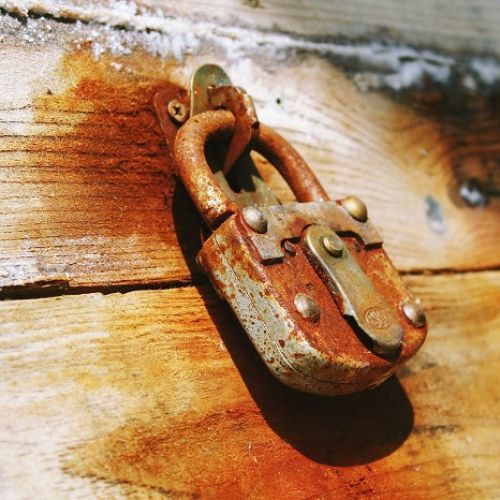
Difference Between Mold And Rust – Identify, Prevent, And Remove Each

How to Make Your Own Lung-Safe Cleaning Products at Home
